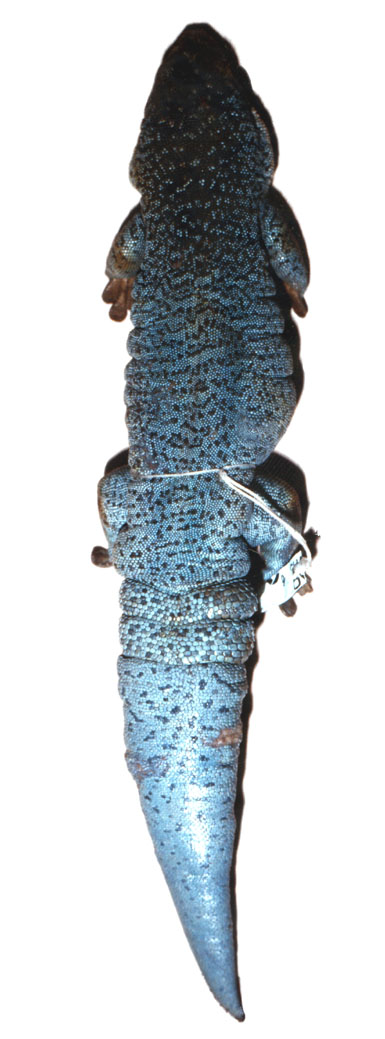- Rodrigues day gecko
Taxobox
name = Rodrigues day gecko

image_width = 200px
regnum =Animal ia
phylum = Chordata
classis = Reptilia
ordo =Squamata
familia =Gekkonidae
subfamilia =Gekkoninae
genus = "Phelsuma "
species = "P. edwardnewtoni"
binomial = "Phelsuma edwardnewtoni"
binomial_authority = (Boulenger, 1884)Rodrigues day gecko ("Phelsuma edwardnewtoni") is a now
extinct diurnalspecies ofgecko s. It lived on the island of Rodrigues and typically inhabitedforest s and dwelt intree s. The Rodrigues day gecko fed oninsect s andnectar .Scientific synonyms
*"Phelsuma edwardnewtoni" VINSON & VINSON 1969
*"Phelsuma newtoni" BOULENGER 1884
*"Phelsuma edwardnewtoni" - KLUGE 1993
*"Phelsuma edwardnewtoni" - RÖSLER 2000: 101Description
This day gecko is now extinct. It was described also as "P. newtonii", yet this name was also used as a synonym for "
Phelsuma gigas ". "P. edwardnewtoni" belonged to the largest day geckos. It reached a total length of about 23 cm. Earlier investigators describe the animal as being quite common. However, this species has not been sighted since 1917, in spite of thorough searches in the 1960s and 1970s on Rodrigues and all offshore islets. Today, only 5 preserved specimens remain, three of which are in TheNatural History Museum inLondon , the two others being in theParis Museum . These specimens have been preserved in alcohol and show a thick-bodied, robust Phelsuma. The body colour has been described as bright green with bright blue spots on the back. The underside of the tail was whitish yellow. The chin had a deep yellow colour.Distribution
This species inhabited Rodrigues Island and its surrounding islets.
Habitat
"P. edwardnewtoni" has been observed on coconut trees and other palms. Their habitat has been largely destroyed by humans and introduced animals such as cats and rats, which may have been the main cause of their extinction.
Diet
These day geckos fed on various insects and other
invertebrate s. They also liked to lick soft, sweet fruit, pollen and nectar.Behaviour
"P. edwardnewtoni" was documented as being unafraid of
human s. It was quite tame and would even eatfruit from one's hand.References
* Henkel, F.-W. and W. Schmidt (1995) "Amphibien und Reptilien Madagaskars, der Maskarenen, Seychellen und Komoren". Ulmer Stuttgart. ISBN 3-8001-7323-9
* McKeown, Sean (1993) "The general care and maintenance of day geckos". Advanced Vivarium Systems, Lakeside CA.
Wikimedia Foundation. 2010.
